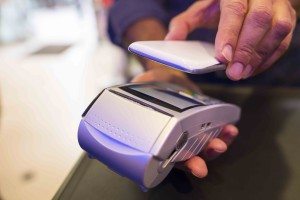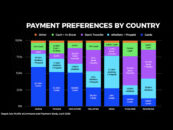
Interview: Texcent to Launch Digital Payments Platform Paycent in Singapore and the Philippines in Coming Weeks
by Fintech News Singapore August 8, 2017Texcent, a Singapore-headquartered fintech startup, is looking to launch its digital payment platform, Paycent, this August in Singapore and the Philippines. The company aims to become the global leader for mobile and cashless transactions with a platform that promises a complete payment solution that can be used across all countries.
 Paycent seeks to offer both end-users and merchants a secure and convenient digital payments platform to send and receive funds, shop and pay bills without the need to use cash or credit cards.
Paycent seeks to offer both end-users and merchants a secure and convenient digital payments platform to send and receive funds, shop and pay bills without the need to use cash or credit cards.
Speaking with Fintechnews.sg, co-founders Svetlana Umarova and Sumedha Goel, said that what differentiates Paycent from its competitors is that the solution also enables cross-border payments. She also noted Paycent’s competitive low transaction fees, and the lack of minimum amount required when sending and requesting funds.
“In 2014, both Sumedha and I shared a vision to bring the financially unserved and underserved masses the ability to live the digital life of the 21st century,” Umarova said in an interview (see full interview below). “We want to offer convenience in terms of money transferring and bills payment. We’re focusing on low transaction fees and readily accessible services for the users.
The mobile payments market

Image credit: Mobile payments by LDprod, via Shutterstock
A report published by Allied Market Research earlier this year projects that the global mobile payments market is estimated to reach US$3,388 billion by 2022, growing at a CAGR of 33.4% from 2016 – 2022. Asia-Pacific is set to witness the highest growth rates.
Increased penetration of smartphones, growth in m-commerce, change in lifestyle and the need for quicker and hassle-free transactions have fueled the growth of the mobile payments market.
While 2015 was the year of awareness, and 2016 the year of innovation and trials, 2017 will be “the year where consumers will move towards technology and adopt these great innovations that companies have already been innovating for the past few years,” she said.
As the industry grows, competition increases as well, and today, there are hundreds of mobile payments services and platforms on the market. Yet, no clear leader has emerged yet.
We met the founders of Paycent in Singapore for an interview. The company is targeting not less than 10 markets. Read the interview here:
1) What is Paycent, and why did you start this particular venture?
Paycent is a financial platform. It aims to be the global leader for complete mobile and cashless transactions. It is comprised of two applications: one for users and one for merchants.
Both users and merchants can enjoy this secure and convenient digital payment platform to send and receive funds, shop, and pay bills without the need to use cash or credit cards.
We’re focusing on low transaction fees and readily accessible services for the users.
2) With so many mobile payments systems currently available on the market, what differentiates Paycent from its competitors?
Paycent is a feature-packed application. You can send and receive funds, request funds, pay bills, pay through split bill, top up mobile load. But what differentiates us from our competitors is that we offer cross border payments and sending and receiving of funds with such competitive low transaction fees. Also, there is no minimum amount required when you send or request funds.
Paycent is targeting 10 Markets
3) How would you describe the current mobile payments landscape in Southeast Asia?
There are a lot of players in the industry but there is still no market leader.
The market isn’t really saturated yet, there are millions of smartphone and internet users and yet not all of these people are mobile wallet users.
We can still penetrate the market and target those who are not being catered – the unbanked. These people do not have access to banks. This kind of innovation – our Paycent app – will be a tool for them to be able to do what the banked sector can do with lesser hassle. They can start sending and receiving funds at the comfort of their home, pay bills even if they are busy and etc.
4) How do you see the industry/market evolve in the coming years?
In the coming years, the Financial Technology industry will truly flourish. Right now, numerous countries have started their journey to become a cashless society. And maybe after a few years, these countries will be 100% cashless.
2015 was a year of awareness and possibilities of payment methods other than cash.
This was the year that the idea of digital payments became a dream because of the already available technology that we have. 2016 was a year of innovation where digital payment companies were starting to innovate and beginning their trials and adoptions. Since there is still no fixed standard on how to do digital payments, digital payment companies were trying different methods on how to make the digital payment into reality.
Looking back from the last two years, we can safely assume that 2017 will be the year where consumers will move towards technology and adopt these great innovations that companies have already been innovating for the past few years.
5) In your opinion, what are the current challenges to mainstream adoption of mobile payments in Southeast Asia?
When it comes to the adoption of mobile payments, it’s really about the availability of venues where users can actually use their mobile wallet. How far can mobile wallets go compared to cash? It’s about acquiring the right set of merchants so that the users will make the switch and start the journey to being a cashless society.
A needed push can also be key in people adopting the technology.
With the help of regulators and the government, a cashless society may be near and having a mobile wallet will be a necessity than a luxury.
These factors can help in people’s decision to adopt mobile wallets. And we are already seeing this happen in some countries.
6) What’s in the pipeline for Paycent? What are you looking to accomplish this year?
Paycent will launch this August 2017 in Singapore and the Philippines. Then in Indonesia on September 2017, followed by Hong Kong, Malaysia, Pakistan, Nepal, Bangladesh, India and the United Arab Emirates (UAE) in the near future within 2017.
We’re looking to really penetrate both the unbanked and banked. We want to dramatically bring down the cost in terms of transaction fees so that our users will enjoy and maximise sending funds across borders. We want to build the right partnerships to increase accessibility.
Questions 1, 4 and 5 answered by Ms Svetlana Umarova.
Questions 2, 3 and 6 answered by Ms Sumedha Goel.
Featured image: Paycent via Facebook.






